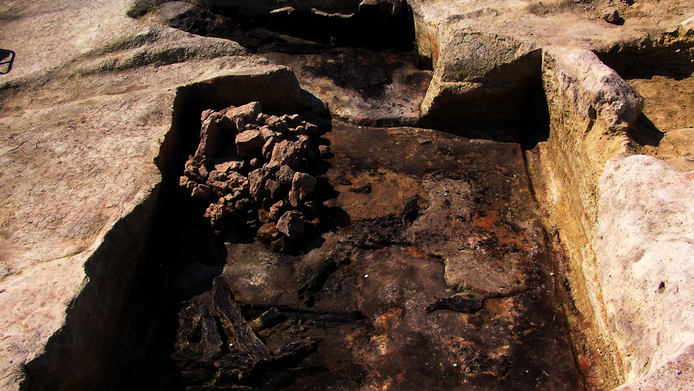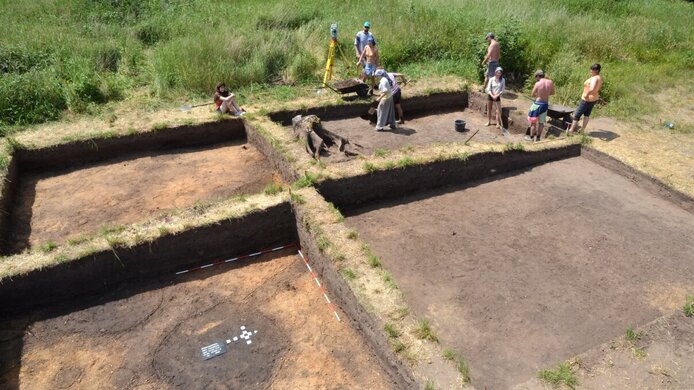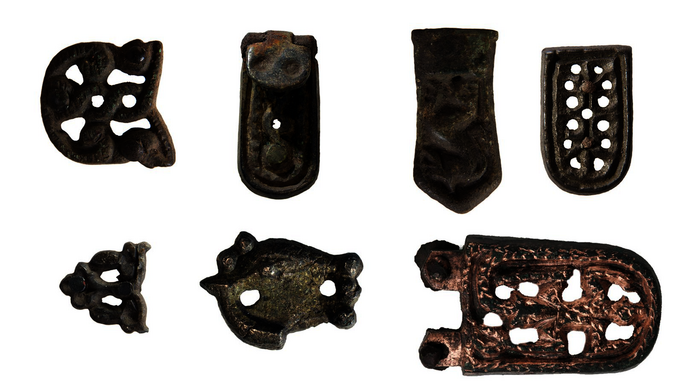The border area as a space for innovation

It was not so long ago that the Morava (German: March) and Dyje (German: Thaya) rivers formed the well-guarded border between Austria and former Czechoslovakia. However, the region along the Iron Curtain was not always so strictly divided. In the early Middle Ages, the area was on the periphery of regional centres of power such as the Moravian strongholds Břeclav-Pohansko and Mikulčice and the western kingdoms along the Danube, but that does not mean it was a no man's land. Quite the contrary: the rivers acted as routes of transport and communication, and the exchange of goods, innovations and cultural practices flourished in this zone of contact. This was discovered by a team of archaeologists from the University of Vienna and the Masaryk University in Brno in the context of the research project Frontier, Contact Zone or No Man's land? Principal investigator Stefan Eichert emphasizes that no new excavations were necessary, but that existing finds and features from the 7th to the 12th century were evaluated with a focus on material culture. The cross-border analyses were financed by the Austrian Science Fund (FWF) and the Czech Science Foundation (GAČR).
Three different notions of border
Since the German word Grenze does not adequately describe the area examined by this international team of researchers, the scholars used English terms: “boundary” (a line which marks the limits of an area), “border” (an area between two countries oriented towards a local centre or exerting an influence into a region) and “frontier” (the territory beyond the “boundary”, taking one into the unknown). The team analysed a wealth of items (bones, pottery, metal) found in traces of settlements and burial sites in present-day Austria and the Czech Republic and compared them with items considered typical in the respective regional culture.
Cultural specificities in flux
Archaeologist Stefan Eichert paints the picture of a flourishing contact zone in the Weinviertel/Moravia region during the Early Middle Ages, a time when material cultures intermingled more thoroughly than has been suggested by written sources. After the collapse of the Roman Empire and the brief dominance of Germanic tribes, the Carolingians as well as Slavic and Avarian tribes exerted their influence in this area from the 7th century onwards. In the 9th century, the Great Moravian and the Carolingian Empires were the two main powers. “The area benefited from its peripheral situation, being at a distance from the centres of power. The material finds suggest something like a laboratory of social and cultural development, with mutual exchanges of innovation – exemplified, for example, by changing burial customs, by an economic change transitioning from trading goods to monetization or by the Moravian-influenced range of ceramics. It was not until the 11th century that dominant, national cultures and clearly delineated areas such as the Babenberg March and the Přemyslid territorial dominion evolved,” explains the principal investigator.
Comparison lends certainty
This is substantiated, for instance, by 8th century burial rites. While inhumation with burial gifts is regarded as typical of the central Avarian area, cremation with bone residues in a ceramic urn was common in Slavic-dominated areas. The Avars also considered multi-part belts a status symbol: “The more items on the belt, the higher the status of the deceased,” Stefan Eichert says to illustrate this point. In the context of the FWF project, the team investigated selected sites in the territory on both sides of the border rivers (e.g. Bernhardsthal, Pellendorf, Mikulov or Hohenau).
A good example of the multiple connections is provided by the Lány site at the confluence of the Morava and Dyje rivers. Slavic ceramics of the “Prague type” were found there, but also Avarian belt sets. The latter, however, were not found in graves, but in the settlement: “There is every indication that the Avar belts were made in an area that would be considered Slavic-dominated. We have found unused belt accessories and other indications that cast-metal items were produced there,” says Eichert. In the Carpathian Basin, on the other hand, thousands of belts have been found in Avarian burial sites, but no production site. This means that, from the 7th to the 10th century, there were cultural hotspots that radiated into the area under investigation and a border region which benefited from the exchanges. The written sources also show that the spheres of influence became more clearly delineated from the 11th century onwards. The material finds clearly reflect the transition from “rulership without an enclosed territory” to “claims to power and delineation of national societies”. The communities identified by the archaeologists only gradually became part of state entities whose impact extends to the present day. As far as the research was concerned, the project was able to re-establish interconnections and to realize cross-border cooperation on a unique scale.
Personal details Stefan Eichert is an archaeologist, who worked for many years at the Institute for Prehistory and Historical Archaeology at the University of Vienna and the Austrian Academy of Sciences’ Institute for Medieval Research. He currently holds a position at the Czech Academy of Sciences working on a project relating to medieval graves and their digital presentation. His main areas of interest are medieval archaeology and history, experimental archaeology and digital humanities.
More information The early medieval sites of the area under investigation were digitised and mapped in cooperation with a project run by the Austrian Academy of Sciences, Digitising Patterns of Power. The results are available online at https://dpp.oeaw.ac.at/ Project website: http://www.openatlas.eu/gkn/
Publications







